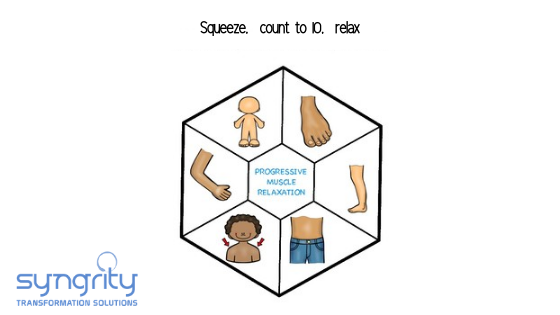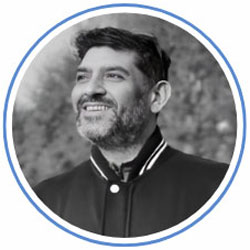Taking forward from the discussion on the previous blog on Anxiety, this blog talks about the second symptom of Anxiety called ‘Panic Disorder’.
Have you ever felt an intense wave of fear? The room you are in suddenly starts spinning, you feel like throwing up. Your whole body starts to shake severely, you are out of your breath and your heart is pounding out of your chest. Yes, this is something that everyone does not experience regularly but when you experience it; it makes you feel like you are about to explode! This episode is called a Panic Attack. A panic attack may be a one-time occurrence, although a very significant amount of population experiences it regularly. When Panic Attacks start happening episodically in a regular manner they are called Panic Disorder.
According to the Diagnostic and Statistical Manual of Mental Disorders, Fifth Edition (DSM-5), A panic attack is an abrupt surge of intense fear or intense discomfort that reaches a peak within minutes, and during which time four (or more) of the following symptoms occur;
The abrupt surge can occur from a calm state or an anxious state.
- Palpitations, pounding heart, or accelerated heart rate.
- Sweating.
- Trembling or shaking.
- Sensations of shortness of breath or smothering.
- Feelings of choking.
- Chest pain or discomfort.
- Nausea or abdominal distress.
- Feeling dizzy, unsteady, light-headed, or faint.
- Chills or heat sensations.
- Paresthesias (numbness or tingling sensations).
- Derealization (feelings of unreality) or depersonalization (being detached from oneself).
- Fear of losing control or “going crazy.”
- Fear of dying.
According to the DSM-5 manual, Panic Disorder is characterized by repeated unexpected panic attacks, combined with major changes in behavior or persistent anxiety over having further attacks. As we have discussed above that panic attacks only last a few minutes, the effects of the experience of going through a panic attack can leave a long-lasting imprint on your psychology. These attacks can shake a person emotionally; the memory of intense fear and terror that you felt during the attacks can negatively impact your self-confidence and can cause serious disruptions in your everyday life. All of these accumulated together, eventually lead to the following panic disorder symptoms.
ANTICIPATORY ANXIETY
If you have panic disorder, you may find yourself anticipating many life events. Driving to work, going into a store, attending a social gathering, and other activities may be a daily focus of your anticipation. Before you had panic attacks, you probably didn’t give much thought to any of these common events, but now anticipation may cause you to feel anxious and interfere with your ability to fully function in your everyday life.
Anticipatory anxiety happens when people experience increased anxiety and stress when they think about an event that will happen in the future. Such anxiety may occur in response to large events such as a presentation at work, but it can also precede minor, everyday activities such as mentioned above. While this is not a distinct mental condition, anticipatory anxiety is a symptom of other conditions including panic disorder and general anxiety disorder.
Phobic avoidance
You begin to avoid certain situations or environments. This avoidance may be based on the belief that the situation you’re avoiding caused a previous panic attack. Or you may avoid places where escape would be difficult or help would be unavailable if you had a panic attack. Taken to its extreme, phobic avoidance becomes agoraphobia.
Agoraphobia was traditionally thought to involve a fear of public places and open spaces. However, it is now believed that agoraphobia develops as a complication of panic attacks and panic disorder. Although it can develop at any point, agoraphobia usually appears within a year of your first recurrent panic attacks. If you’re agoraphobic, you’re afraid of having a panic attack in a situation where escape would be difficult or embarrassing. You may also be afraid of having a panic attack where you wouldn’t be able to get help. Because of these fears, you start avoiding more and more situations.
WHAT CAUSES PANIC ATTACKS AND PANIC DISORDER
If you are prone to experiencing negative emotions and are sensitive to anxiety you may be at risk for the onset of panic attacks and panic disorder. Childhood experience of sexual or physical abuse, smoking, and interpersonal stressors in the months before the first panic is also a risk factor.
Furthermore, it is believed that genetics play a role in susceptibility to panic disorder, although the exact genes, gene products, or functions that are implicated are not known. Individuals with a parent or parents diagnosed with anxiety, depression or bipolar disorder are also thought to be at a higher risk of developing panic disorder.
HOW TO DEAL WITH A PANIC ATTACK
1. Plan Ahead

When being diagnosed with Panic Disorder, having a rescue plan created for your self is a good option. You can create a set of instructions for yourself, whenever you feel like an attack is coming. One plan might be to take yourself out of your current environment, sit down, and call a friend or family member that can help distract you from your symptoms and help you to calm down. Then you can incorporate the following techniques.
2. Practice Deep Breathing

Shortness of breath is a common symptom of panic attacks that can make you feel frantic and out of control. Acknowledge that your shortness of breath is a symptom of a panic attack and that this is only temporary. Then begin by taking a deep breath in for a total of five seconds, hold for a second, and release it for a total of five seconds. Keep repeating this pattern until your breathing becomes controlled and steady. Focusing on the count of four not only will prevent you from hyperventilating, but it can also help to stop other symptoms in their tracks.
3. Use Muscle Relaxation Technique

During a panic attack, it’s inevitable that you’ll feel like you’ve lost control of your body, but muscle relaxation techniques allow you to gain back some of that control. Progressive Muscle Relaxation (PMR) is a simple but effective technique for panic and anxiety disorders. Start by clenching your fist and holding this clench until the count of 10. Once you get to 10, release the clench and let your hand relax completely. Next, try the same technique in your feet and then gradually work your way up to your body clenching and relaxing each muscle group: legs, glutes, abdomen, back, hands, arms, shoulders, neck, and face.
4. Repeat a Mantra
You may feel a little awkward doing this at first but repeating an encouraging, positive mantra to yourself during a panic attack can serve as a coping mechanism. Try repeating something as simple as “This is temporary. I will be okay,” or “I’m not going to die. I just need to breathe.”
5. Find an Object and Focus on it
Pick an object that you can see somewhere in front of you and note everything you notice about that object—from its color and size to any patterns it may have, where you might have seen others like it, or what something opposite to the object would look like. You can do this in your head or speak your observational aloud to yourself or a friend.
Clinical treatment for Panic Disorder
A form of psychotherapy called Cognitive Behavioral Therapy has been found by several studies to be the most effective treatment for panic attacks and panic disorder. CBT is a structured, action-oriented type of psychological treatment that was created in the 1960s by Dr. Aaron Beck, founder of the Beck Institute for Cognitive Behavior Therapy. Cognitive-behavioral therapy (CBT) is a form of psychotherapy that focuses on identifying and restructuring negative patterns of thought and behavior. During CBT, you will work with a therapist on relaxation training, restructuring your thoughts and behaviors, mindfulness, exposure treatment, and stress reduction. Many people that suffer from panic attacks start to notice a reduction within weeks, and symptoms often decrease significantly or go away completely within several months.
Even if all these techniques do not provide you the solution for your Panic Attacks, it is the right time to go and consult a Psychiatrist, who can provide some medical treatment for the problems. These medications can be extremely helpful in managing panic attack symptoms, as well as anxiety and depression.
References:
- https://www.verywellmind.com/anticipatory-anxiety-and-panic-disorder-2584252
- https://www.psycom.net/panic-attacks-panic-disorder-symptoms
- https://www.healthline.com/health/panic-disorder#risks
- https://timesofindia.indiatimes.com/Dont-panic-It-is-only-a-panic-attack/articleshow/54974742.cms
- https://dsm.psychiatryonline.org/pb-assets/dsm/update/DSM5Update2015.pdf
Vipin Kumar Tanwar is associated with Psycho-social clinical studies from the last six years. He has graduated with a Masters Degree in Clinical Psychology with a keen interest in establishing the Philosophy of relationship between Psychology and our Society. He is now working with Syngrity Transformational Solutions
“Man knows much more than he understands.” – by Alfred Adler







 MALATI VASUDEVA
MALATI VASUDEVA VIKRAM BADHWAR
VIKRAM BADHWAR PRIYANKA KUMAR
PRIYANKA KUMAR SUMAL VARGHESE
SUMAL VARGHESE















Awesome post! Keep up the great work! 🙂
thank you